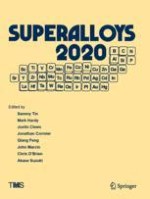2020 | OriginalPaper | Buchkapitel
Laboratory-Scale Replication of Deposit-Induced Degradation of High-Temperature Turbine Components
verfasst von : Matthew Kovalchuk, Brian Gleeson
Erschienen in: Superalloys 2020
Aktivieren Sie unsere intelligente Suche, um passende Fachinhalte oder Patente zu finden.
Wählen Sie Textabschnitte aus um mit Künstlicher Intelligenz passenden Patente zu finden. powered by
Markieren Sie Textabschnitte, um KI-gestützt weitere passende Inhalte zu finden. powered by
